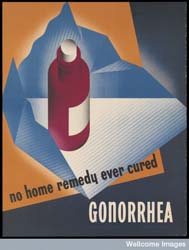Super gonorrhea
When it comes to superbugs, methicillin-resistant Staphylococcus aureus always seems to get the press.
Loquacious, brash and bold, it seems that everyone has a story about their grandmother, or partner — or pet Chihuahua — who had a run-in with boils or rashes. When I am at family functions, long-lost relatives run up to me to ask whether they could catch MRSA from other people they have seen with strange rashes. Even legislators have gotten into the act — some states have mandated that hospitals check whether incoming patients are colonized with MRSA
Patients are always surprised when I tell them that there are actually many options for treating MRSA — including oral outpatient options — and our armamentarium is quite full.
However, what comes close to the top of my list of ghoulish infectious disease ‘bugs’ is not MRSA, but multidrug-resistant N. gonorrhoeae. And lest you think gonorrhea is some orphan disease relegated to anonymous municipal STD clinics — 700,000 men and women are diagnosed every year in the United States. At last year’s International Society for Sexually Transmitted Disease Research (ISSTDR) conference, Magnus Unemo, PhD, of Orebro University Hospital in Sweden, and colleagues reported that a Japanese clinical strain of N. gonorrhoeae (unaffectionately called H041) was found to be resistant to all known antimicrobials, including the injectable cephalosporins, the last bastion of treatment.

Source: Wellcome Library, London
Public health officials are starting to take notice now that the strain has been reported in several other countries including Britain and Australia. No one is really sure where it arose, whether from commensal oral Neisseria species in the oropharynx or from sub-optimal treatment of genital species that then became transmitted sexually.
So far, none in the US — yet. I quizzed Jeff Klausner, MD, MPH, of UCLA, a longstanding mentor of mine who always has his finger on the pulse of all things STI. The writing is already on the wall, he thinks. Since the 1950s, there has been a repeated pattern of emergence of resistant gonorrhea in Asia first, but inevitably importation and spread through the western US and other parts of the country. This was seen with sulfa-based drugs, penicillin, tetracyclines and now cephalosporins.
“It’s a very smart bug and it has repeatedly developed resistance to the antibiotics we have used to treat it,” according to Julie Stoltey, MD, of University of California, San Francisco.
More untreated gonorrhea has consequences beyond annoyances of painful urethritis. Klausner thinks this could mean more pelvic inflammatory disease, chronic pelvic pain, ectopic pregnancies and infertility in women. To the extent that gonorrhea amplifies HIV transmission, this could also mean an increase in HIV incidence in some populations.
For now, Klausner echoes the CDC recommendation that all gonorrhea cases should be treated with dual therapy — injectable ceftriaxone plus either azithromycin or doxycycline (even if chlamydia is not concomitantly diagnosed).
What about in the longer term? There is already technology available to detect both N. gonorrhoeae and resistant-N. gonorrhoeae as a rapid molecular diagnostic assay. Yet, limitations in resources and political will have stalled adoption in the clinics. We need to go well beyond drug development for MRSA and start focusing on the gram negatives as well. Given how long it takes from drug development to clinical use, it may already be too late for gonorrhea.
